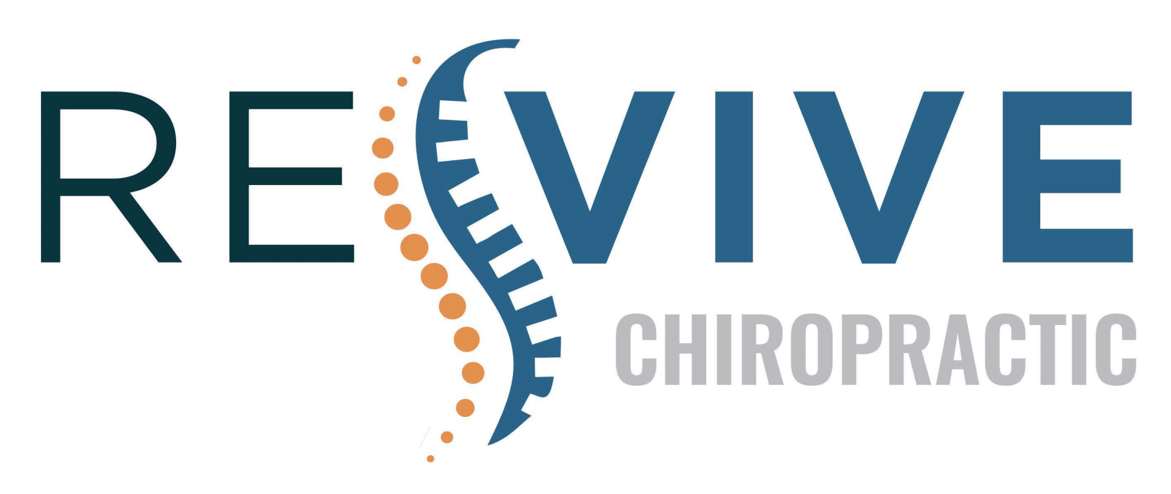If you're an athlete looking to enhance your recovery, you might want to evaluate the various ways chiropractors can support your journey. They focus on spinal adjustments to improve alignment and nervous system function, alongside soft tissue therapies that relieve tension and boost flexibility. But that's just the beginning; their holistic approach also includes tailored rehabilitation programs and nutritional guidance. Curious about how these strategies specifically target your recovery needs and prevent future injuries? There's much more to explore in the domain of chiropractic care for athletes.
Spinal Adjustments
Spinal adjustments play an essential role in athletic recovery by realigning the spine and improving overall function. When you engage in intense training or competition, your spine can become misaligned due to physical stress, repetitive movements, or even minor injuries. This misalignment can lead to discomfort, reduced mobility, and hinder your performance. That's where spinal adjustments come in.
Regular visits to a chiropractor can help restore balance to your spine, allowing for better nervous system function. When your spine is properly aligned, your body communicates more effectively, which means your muscles can respond quicker and more accurately during athletic activities. You might notice improved flexibility and range of motion after just a few adjustments.
In addition, spinal adjustments can alleviate pain and tension that may arise from your training regimen. By addressing these issues early, you can prevent more severe injuries down the line. You'll likely find that your recovery time decreases and your overall athletic performance improves as a result.
It's important to remember that each athlete's needs are unique. A chiropractor will assess your specific situation and tailor their adjustments accordingly. This personalized approach guarantees that you're getting the most benefit from your treatments.
Soft Tissue Therapy
Soft tissue therapy plays an essential role in your recovery by employing muscle relaxation techniques that help ease tension and improve flexibility.
By incorporating these strategies, you can't only enhance your performance but also reduce the risk of future injuries.
Understanding how to implement these techniques can be a game-changer for your athletic journey.
Muscle Relaxation Techniques
Muscle tension can hinder athletic performance and recovery, making effective relaxation techniques essential for athletes. Chiropractors utilize various soft tissue therapy methods to help you release tight muscles and improve your overall recovery process. Techniques like myofascial release and deep tissue massage target specific muscle groups, promoting blood flow and reducing soreness.
When you receive these treatments, you're not just alleviating muscle tension; you're also enhancing your range of motion, which can lead to better performance on the field or court. Chiropractors may also incorporate stretching routines tailored to your individual needs, ensuring that your muscles remain flexible and less prone to injury.
Additionally, they can teach you self-massage techniques that you can use at home, keeping your muscles relaxed between sessions. By regularly addressing muscle tension, you'll notice improvements in your overall athletic performance and quicker recovery times after intense workouts or competitions.
Incorporating these muscle relaxation techniques into your routine can be a game changer, helping you stay at the top of your game and ready for any challenge that comes your way.
#
Injury Prevention Strategies
Injury prevention is essential for athletes looking to maintain peak performance and avoid setbacks. One effective method chiropractors use is soft tissue therapy, which targets muscles, tendons, and ligaments to enhance flexibility and strength. By incorporating soft tissue techniques, you can reduce muscle tension, improve circulation, and promote faster recovery.
Regular sessions with a chiropractor can help you identify tight areas and imbalances in your body before they lead to injuries. For instance, they may use techniques like myofascial release or deep tissue massage to break down adhesions and release tension in soft tissues. This not only helps with recovery but also prepares your body for the demands of your sport.
Additionally, chiropractors often provide personalized stretching and strengthening programs tailored to your specific needs. These exercises are designed to enhance your range of motion and stability, which are vital for injury prevention.
## Injury Prevention Strategies
To keep injuries at bay, you need to focus on effective warm-up techniques, strengthen your core muscles, and incorporate flexibility and mobility exercises into your routine.
These strategies not only enhance your performance but also prepare your body for the demands of athletic activity.
Proper Warm-Up Techniques
Before you hit the field or court, warming up properly is essential for avoiding injuries and enhancing performance. A good warm-up routine increases blood flow to your muscles, which prepares your body for the demands of your sport.
Start with 5 to 10 minutes of light aerobic activity, like jogging or jumping jacks, to elevate your heart rate. This boosts circulation and gets your muscles ready to work.
Next, move into dynamic stretches that mimic the movements you'll perform during your game. Think leg swings, arm circles, and walking lunges. These stretches improve your range of motion and help activate your muscles without the risk of injury associated with static stretching.
Don't forget to focus on sport-specific movements. If you're a basketball player, practice dribbling and shooting; if you're a soccer player, work on your footwork and ball control. This not only prepares your body but also gets you mentally ready for the competition.
Incorporating these warm-up techniques into your routine can greatly reduce the risk of injury and enhance your overall athletic performance.
Strengthening Core Muscles
Strengthening your core muscles is a game-changer for injury prevention and overall athletic performance. A strong core stabilizes your body, supporting your spine and improving your balance. This stability allows you to perform movements more efficiently, reducing the risk of strains and injuries during athletic activities.
Incorporating core-strengthening exercises into your routine can considerably enhance your athletic capabilities. Focus on exercises like planks, bridges, and Russian twists. These movements not only target your abdominal muscles but also engage your back, hips, and pelvic floor, creating a balanced strength foundation.
Chiropractors can help tailor a core-strengthening program that fits your specific needs. They'll assess your posture and identify muscle imbalances, ensuring you're engaging the right muscles effectively.
Flexibility and Mobility Exercises
Core strength alone isn't enough to keep you injury-free; flexibility and mobility play an essential role in athletic performance and recovery.
If you want to enhance your overall athletic capability and prevent injuries, incorporating flexibility and mobility exercises into your routine is vital.
Here are three key benefits of focusing on flexibility and mobility:
- Improved Range of Motion: Regularly stretching your muscles and joints allows for greater movement efficiency. This means you can perform athletic activities with better form, reducing the risk of strains or sprains.
- Enhanced Recovery: Mobility exercises promote blood flow to your muscles, helping to flush out toxins and reduce soreness. This can speed up recovery times after intense workouts or competitions.
- Injury Prevention: By improving your flexibility, you're more likely to maintain proper alignment during physical activities. This alignment minimizes undue stress on your muscles and joints, lowering your chances of injury.
Incorporating these exercises into your routine not only enhances your performance but also keeps you in the game longer.
Enhanced Range of Motion
Improving your range of motion is crucial for athletic performance and recovery. When you can move your joints freely and efficiently, you'll enhance your overall performance and reduce the risk of injury. Chiropractors play an important role in helping you achieve this enhanced range of motion.
Through specific adjustments and manipulations, chiropractors can align your spine and joints, allowing them to move more freely. This alignment not only helps relieve tension and pain but also promotes better biomechanics. When your body moves as it should, it can perform at its peak, whether you're running, jumping, or lifting weights.
Chiropractors often incorporate targeted stretches and exercises tailored to your specific needs. These practices help lengthen tight muscles while strengthening weak ones, creating a balanced and functional body. Regular chiropractic care encourages joint health and flexibility, allowing you to reach your full athletic potential.
You may also notice that enhanced range of motion leads to quicker recovery times from strenuous workouts or injuries. When your joints are functioning efficiently, you're less likely to experience soreness and stiffness, making it easier to bounce back after intense training sessions.
Incorporating chiropractic care into your routine not only aids in maintaining your range of motion but also fosters a proactive approach to injury prevention. By prioritizing your mobility, you're setting yourself up for long-term success in your athletic endeavors.
Improved Circulation
One key benefit of chiropractic care is improved circulation, which plays an important role in athletic recovery.
When you undergo chiropractic adjustments, your body's blood flow increases, allowing crucial nutrients and oxygen to reach your muscles more effectively. This enhanced circulation can lead to faster recovery times and better overall performance.
Here are three significant ways improved circulation aids in your athletic recovery:
- Faster Healing: When your blood circulation improves, it accelerates the delivery of important nutrients to your muscles. This means any micro-tears or strains you've incurred during training can heal more quickly, helping you get back to your routine sooner.
- Reduced Muscle Soreness: Increased circulation helps flush out metabolic waste products like lactic acid that can build up during intense workouts. By eliminating these toxins, you can experience less muscle soreness, allowing you to maintain your training schedule without prolonged downtime.
- Enhanced Flexibility: Good circulation guarantees that your muscles and connective tissues receive the hydration they need. This leads to better elasticity and flexibility, reducing the risk of injury and improving your overall performance in your chosen sport.
Incorporating chiropractic care into your routine not only aids in recovery but also optimizes your athletic performance.
Pain Management Techniques
While athletic pursuits can lead to inevitable discomfort and pain, effective pain management techniques offered by chiropractors can help you maintain peak performance. Chiropractors employ a variety of methods tailored to your specific needs, ensuring you can recover faster and return to your sport with confidence.
One of the primary techniques is spinal manipulation. This hands-on approach realigns the spine and alleviates pressure on nerves, which can greatly reduce pain levels. By restoring proper alignment, you'll not only feel relief but also improve your overall range of motion, allowing for more fluid movement during your athletic activities.
Another technique chiropractors use is soft tissue therapy. This involves targeted massage and myofascial release, addressing muscle knots and tightness that can contribute to pain. By loosening these areas, you'll enhance circulation and promote faster recovery.
Chiropractors may also incorporate modalities like electrical stimulation or ultrasound. These therapies can help reduce inflammation and promote healing by increasing blood flow to affected areas. They're particularly useful for managing acute pain after a tough workout or competition.
Additionally, chiropractors often provide guidance on pain management strategies you can implement at home, such as stretching routines and ergonomic adjustments. These tips can help you prevent further injuries and maintain your body's ideal function.
Incorporating these pain management techniques into your recovery routine can make a considerable difference, enabling you to push your limits and achieve your athletic goals more effectively.
Rehabilitation Programs
When you're recovering from an injury, structured rehabilitation programs designed by chiropractors can be essential to regaining strength and functionality.
These programs are tailored specifically to your needs, helping you rebuild your body's capabilities safely and effectively. You'll benefit from an extensive approach that focuses on not just healing, but also enhancing your overall performance.
Chiropractors use various techniques in rehabilitation programs, including:
- Functional Movement Assessment: This helps identify imbalances or weaknesses in your body, allowing for a personalized recovery plan that targets specific areas for improvement.
- Therapeutic Exercises: Engaging in prescribed exercises aids in restoring strength, flexibility, and coordination. Your chiropractor will guide you through these exercises, ensuring you're doing them correctly to avoid further injury.
- Manual Therapy: Chiropractors often incorporate hands-on techniques to relieve pain and improve mobility. This can include spinal manipulation, muscle stretching, and joint mobilization, all designed to support your recovery journey.
Nutritional Guidance
Nutrition plays an essential role in athletic recovery, and chiropractors often provide tailored dietary guidance to support your healing process. When you're recovering from an injury or intense training, the right nutrients can greatly enhance your body's ability to repair itself. Chiropractors understand that proper nutrition helps reduce inflammation, improve muscle repair, and restore energy levels.
You should focus on a balanced diet rich in whole foods. Incorporate lean proteins, like chicken, fish, and legumes, to support muscle recovery. Healthy fats from sources like avocados, nuts, and olive oil are vital for reducing inflammation and promoting overall health.
Don't forget complex carbohydrates, such as whole grains and vegetables, which provide the energy you need for ideal performance.
Hydration is another key aspect of recovery. Chiropractors often remind you to drink plenty of water and consider electrolyte-rich beverages if you've been sweating heavily. This helps maintain fluid balance and supports recovery processes.
Additionally, chiropractors might suggest specific supplements if needed. Omega-3 fatty acids, for example, can aid in reducing inflammation, while antioxidants help combat oxidative stress.
Conclusion
Incorporating chiropractic care into your athletic recovery can make a significant difference in your performance and overall well-being. By benefiting from spinal adjustments, soft tissue therapy, and personalized rehabilitation programs, you'll not only recover faster but also enhance your strength and flexibility. Plus, with proper nutritional guidance and injury prevention strategies, you can stay at the top of your game. Embrace these chiropractic techniques and experience the full potential of your athletic capabilities!



